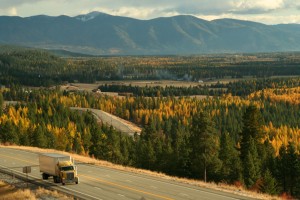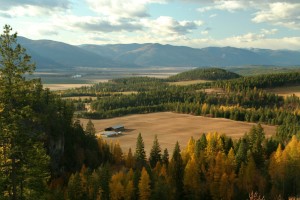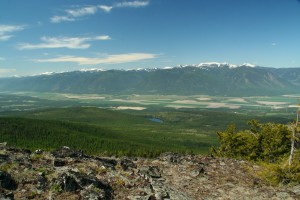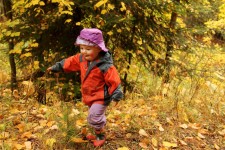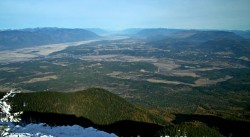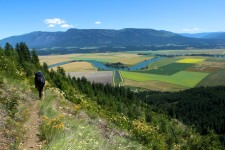Twilight was quickly fading as we drove south on Highway 95 after crossing the border at Eastport. As we descended down the hill by Brush Lake, there was just enough twilight left to see the view I had been waiting for–the Selkirk Mountains over the Kootenai Valley.
Even though I could only make out the major features in the fading light, the view is etched in my mind from descending the hill many times. The tree-covered slopes of Trout Creek and Ball Creek stand above the patchwork of fields in the valley. The north bench a checkerboard of fields, forests and homesites.
After being away for seven months in Alaska, I realized how much I take for granted in Boundary County–the wildlife, the trees and the land. After only seeing three animals bigger than a snowshoe hare all summer (lynx, caribou and black bear each once), I’m looking forward to deer and turkeys walking through my yard, watching elk herds and coyotes in the fields, and finding moose browsing up Myrtle Creek. I take for granted the variety and abundance of our big game animals. I enjoy seeing the tracks of the more elusive critters of the mountains–cougars, marten, bobcat and lynx, to name a few–because I know that if I spend enough time outside I will eventually see the animal itself.
Even during a short walk in the woods, I hear the nasally twang of a nuthatch, the piercing scream of an eagle overhead or the funny call of the pileated woodpecker. The woods are filled with so many sounds that I often don’t pay attention to, including the wind blowing through the towering pine trees.
Oh, how nice it is to see trees larger than six inches across and 20 feet tall. As we drove from Alaska to Idaho, I could see the progression of increasing tree height and variety. The short black and white spruce of the boreal forest slowly grew taller and then started to include tamarack (which later changed to larch). Then farther down the road came the lodgepole pine, then hemlock and cedar, and then Douglas fir. Only after passing through Radium Hot Springs did the ponderosa pine appear along with one of my favorite things about autumn–hillsides covered in a mosaic of green and gold. Larch make autumn colorful when the forests are dominated by conifers.
From alpine fir to yew, the land here supports a diverse array of trees. When looking along the edge of a field, the assortment of trees is evident in shape and color, with each conifer having its own shade of green (and yellow in the fall for the larch).
When overlooking the valley, the combination of forests with logging, open fields with tractors, pastures with grazing livestock and horses, and the meandering Kootenai River make the view complete. I’m glad to be home.

